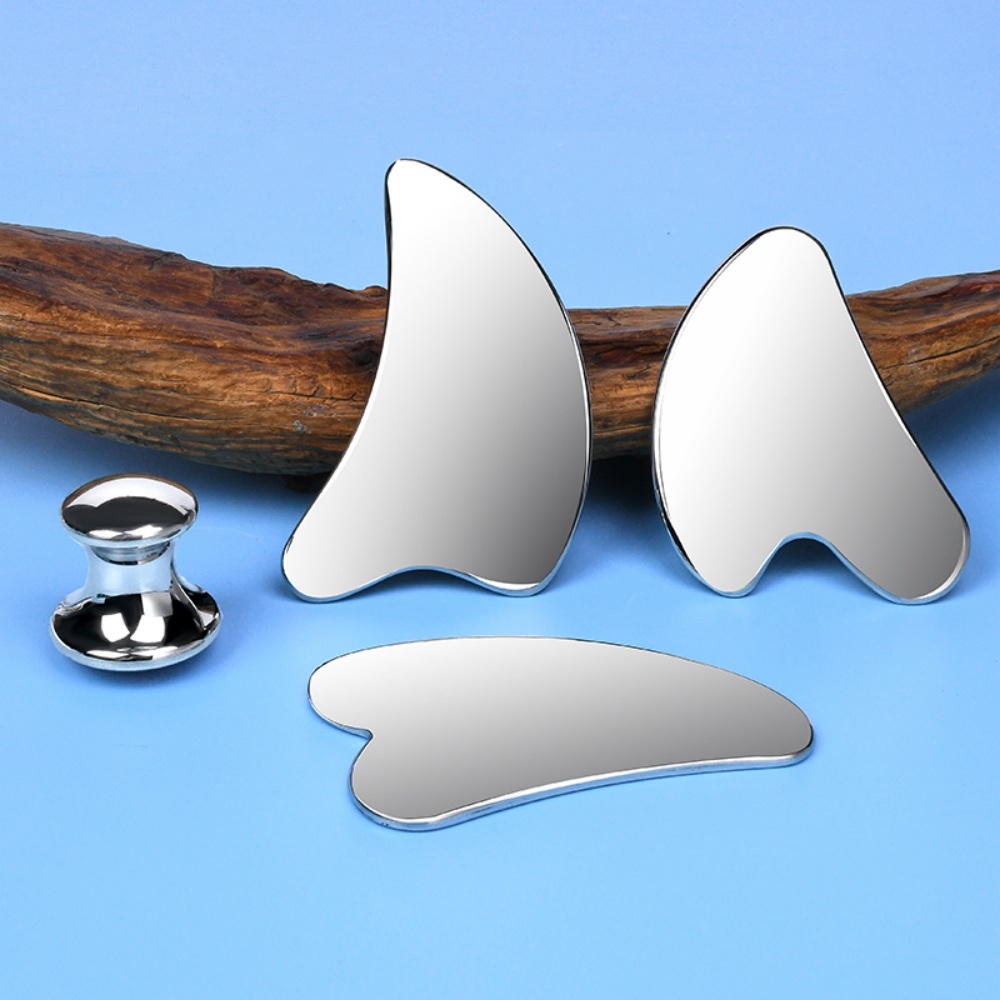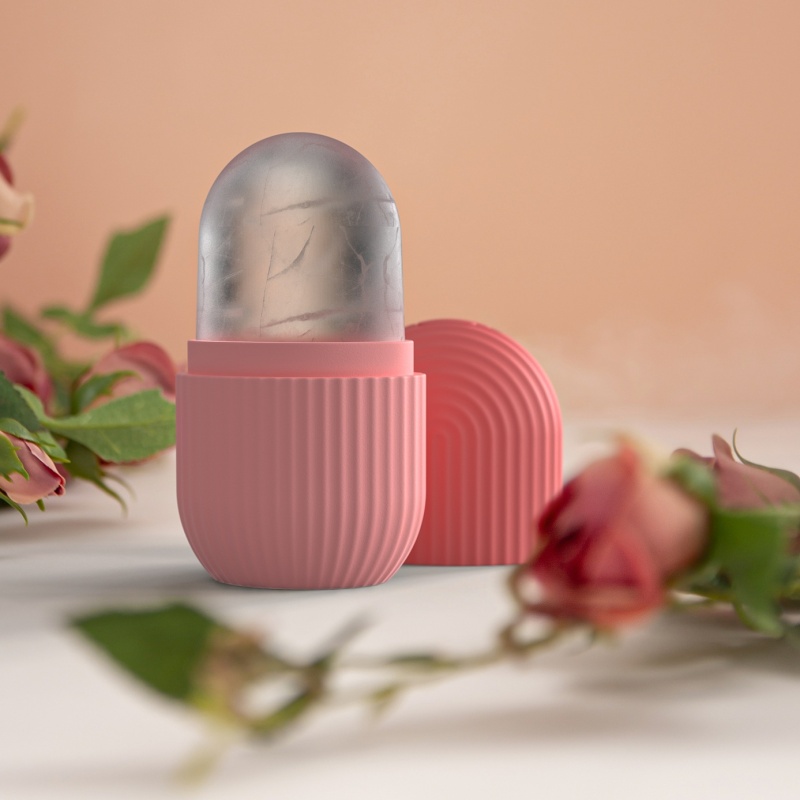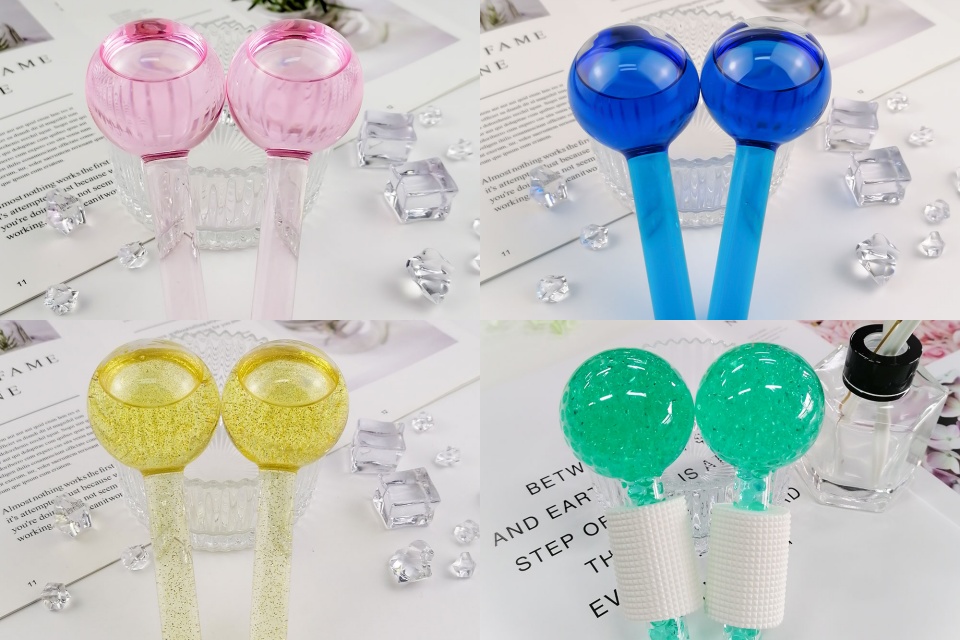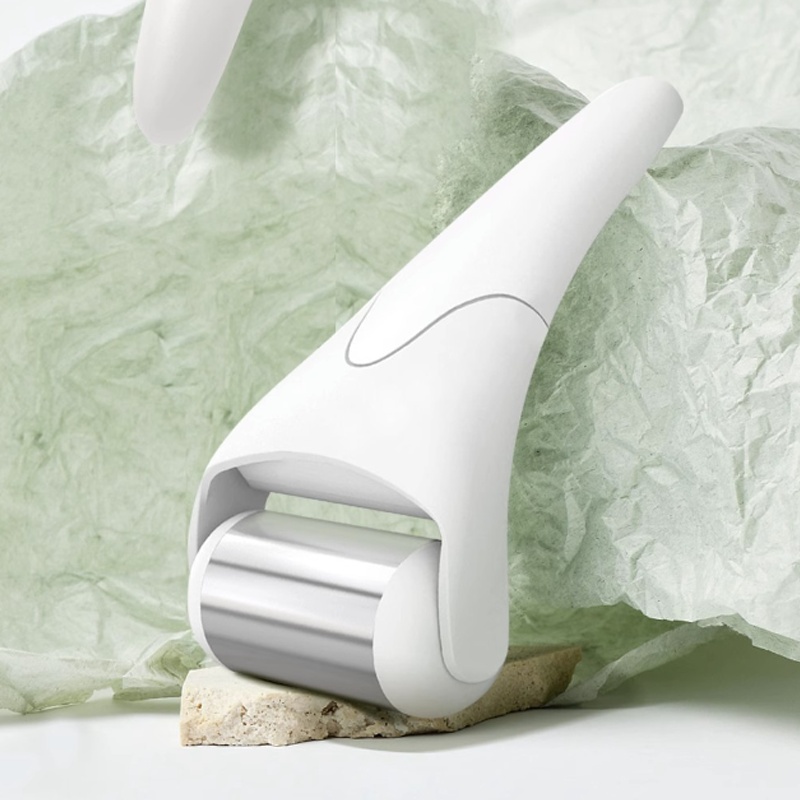Cryotherapy rollers: benefits for acne and inflammation
Summary
Cryotherapy rollers are handheld devices that utilize cold therapy to offer potential benefits for skin health, particularly in treating acne and reducing inflammation. As a growing trend in skincare, these rollers have gained popularity for their ability to alleviate skin issues through localized application of cold, promoting healing and enhancing overall complexion. Their efficacy in minimizing acne lesions and soothing irritated skin has positioned cryotherapy rollers as a favored adjunct in contemporary beauty and wellness routines, especially among younger demographics who seek at-home solutions for skin management. The therapeutic effects of cryotherapy stem from its mechanism of action, which involves vasoconstriction and reduced blood flow to the treated areas. This process can decrease swelling, redness, and inflammation associated with various skin conditions, including acne, rosacea, and sensitivity. Users often report immediate improvements in skin tone and texture, as well as temporary tightening effects, leading to a more even complexion and diminished fine lines. While individual results can vary and scientific research remains limited, anecdotal evidence and expert endorsements highlight the rollers' potential to enhance skincare regimens and promote healthier skin. Despite the appealing benefits, the use of cryotherapy rollers is not without controversy. Concerns regarding skin safety, potential adverse effects, and the need for proper application techniques are essential considerations for users. Improper use can lead to temporary side effects such as redness and irritation, and in some cases, more severe complications if guidelines are not followed. As with any cosmetic treatment, the importance of professional guidance and individual variability in response underscores the need for cautious and informed use of cryotherapy rollers in skincare routines. In summary, cryotherapy rollers present a modern approach to addressing acne and inflammation through localized cold therapy. Their rising popularity is fueled by the pursuit of effective, accessible skincare solutions, yet the importance of understanding their mechanisms, potential risks, and the variability of individual outcomes remains critical for users seeking to incorporate these tools into their beauty practices.
History
Early Practices of Cold Therapy
The use of cold as a therapeutic method is not a modern concept; it has roots that date back to ancient civilizations. Early cultures, including those in ancient Greece, Persia, and Rome, employed cold remedies such as snow, ice-and-water mixtures, and cold baths to treat various ailments. These practices laid the groundwork for contemporary applications of cryotherapy. For instance, ice water plunges remain a common practice in many northern countries, highlighting the long-standing belief in the health benefits of cold exposure. Additionally, prior to the 1980s, some psychiatric patients in the United States were wrapped in cold, wet sheets as a means to calm agitation or stimulate activity, showcasing the physiological effects cold can have on the human body.
Development of Cryotherapy Techniques
The term "cryotherapy" encompasses a range of medical treatments that utilize freezing or near-freezing temperatures, commonly referred to as cold therapy. The origins of these techniques can be traced back to ancient medical practices, but they gained more formal recognition with advancements in medical technology. In 1979, Japanese professor Toshio Yamauchi innovated the cryosauna, a device designed for whole-body cryotherapy (WBC), which has since grown in popularity as a wellness treatment for both physical and mental health.
Evolution of Cryotherapy Applications
Throughout history, cryotherapy has evolved to include various forms of treatment, from its traditional applications to modern methods like cryosurgery and cryoablation. Cryotherapy is employed to target abnormal tissues, effectively destroying diseased cells through extreme cold. This minimally invasive therapy has been shown to treat diverse conditions, including skin disorders and certain types of cancers, further establishing its significance in contemporary medical practice. As understanding of the therapy's benefits has grown, so too has the technology surrounding cryotherapy devices, including handheld tools like ice rollers that allow for localized treatment. These advancements reflect a continuing integration of cold therapy into both medical and wellness contexts, with an emphasis on improving skin health, reducing inflammation, and addressing various ailments.
Mechanism of Action
Cryotherapy, encompassing a range of techniques that utilize extreme cold, exerts its therapeutic effects through several physiological mechanisms that contribute to its benefits for conditions such as acne and inflammation. These mechanisms can be broadly categorized into three phases: heat transfer, cell injury, and inflammation reduction.
Benefits
Cryotherapy rollers offer a range of benefits, particularly for individuals dealing with acne and inflammation. These tools harness the power of cold therapy to promote healing and enhance skin health through various mechanisms.
Reducing Inflammation
One of the primary benefits of cryotherapy is its ability to reduce inflammation in the skin. The cold sensation from the rollers helps to lower overall skin temperature, which can decrease redness and irritation associated with inflammatory skin conditions like acne, rosacea, and psoriasis. By decreasing vascular permeability and soft tissue swelling, cryotherapy contributes to a calmer complexion.
Acne Treatment Support
Cryotherapy rollers can serve as an adjunct treatment for acne. They stimulate blood flow and promote lymphatic drainage, which aids in detoxifying the skin and delivering essential nutrients. While a single session may not yield significant long-term results, regular use can enhance the overall appearance of the skin and may help in managing breakouts more effectively over time. The cooling effect can also temporarily shrink the appearance of pores, giving the skin a smoother and more even texture.
Skin Appearance and Tone
In addition to its anti-inflammatory effects, cryotherapy can improve skin tone and texture. The application of cold can temporarily tighten the skin, reduce puffiness, and enhance the overall glow of the complexion. Many users report a more even skin tone and diminished fine lines, which can be particularly beneficial for those concerned about aging. Furthermore, cryotherapy encourages collagen production, which helps maintain skin elasticity and firmnes
Soothing Sensitive Skin
Cryotherapy rollers are particularly beneficial for sensitive or irritated skin types. They can calm redness and discomfort, making them a suitable option for individuals with skin conditions prone to inflammation. The cooling effect also provides immediate relief from heat and irritation, enhancing overall comfort and skin health.
Applications
Cryotherapy rollers have gained popularity for their versatility and effectiveness in addressing various skin concerns, particularly acne and inflammation.
Skin Treatment Benefits
Cryotherapy, which involves the application of ice-cold temperatures to the skin, is known to reduce inflammation and provide several internal and external health benefits. The use of cryotherapy rollers can enhance skincare routines by promoting better absorption of products. For instance, experts recommend using ice rollers to help distribute moisturizers evenly across the face, thus maximizing their effectiveness.
Acne Management
Cryotherapy is particularly noted for its targeted approach to treating acne. By lowering skin temperature, it can reduce inflammation associated with active acne lesions, providing a soothing effect that helps alleviate redness and swelling. Additionally, dermatologists recognize cryotherapy as a valuable treatment modality for both benign and malignant skin conditions, given its ability to improve cosmetic appearance with minimal complications.
Enhanced Therapeutic Experience
To optimize the therapeutic results of cryotherapy, sessions are typically guided by trained professionals who tailor the treatment to individual needs, including specific inflammation concerns and skincare goals. This personalized approach ensures that each session not only targets existing skin issues but also contributes to overall skin health and rejuvenation.
Safety and Guidelines
While cryotherapy offers numerous benefits, it is essential to use it correctly to avoid adverse effects. For example, experts caution against prolonged exposure to extreme cold, which can irritate or damage the skin. Recommended practices include maintaining light pressure during treatment and ensuring that the roller is not left in one spot for too long.
Research and Evidence
The scientific investigation into cryotherapy, particularly its application for treating inflammatory skin conditions like acne, remains a burgeoning field with varying results. Many studies suggest that local cryotherapy can significantly improve acne lesions, inducing a more rapid involution compared to traditional topical treatments. This treatment is believed to enhance collagen production, improve blood circulation, and reduce inflammation and redness associated with acne-prone skin. Despite the promising outcomes, the efficacy of whole-body cryotherapy (WBC) is less clearly defined. Several reviews have highlighted the high heterogeneity in methodologies, such as the specifics of the exercise insult and the cold protocol used, which contribute to the ongoing debate regarding the effectiveness of WBC for recovery from high-intensity exercise. There is a notable lack of comprehensive studies that address the molecular mechanisms at play during cryotherapy treatments, limiting the understanding of how these interventions might function at a cellular level. Furthermore, while local cryotherapy shows promise, the majority of published research has focused primarily on its superficial effects rather than deeper physiological changes. This gap in understanding underscores the need for more rigorous and controlled studies to better establish the clinical benefits and mechanisms behind cryotherapy modalities. In clinical settings, precision cryotherapy has been noted for its safety and effectiveness in treating acne vulgaris, suggesting a potential for broader applications in dermatological practices. Nonetheless, the necessity for more targeted inflammation trials remains critical to substantiate these findings further and optimize treatment protocols. Overall, while evidence exists supporting the use of cryotherapy for inflammatory skin conditions, additional research is required to fully elucidate its benefits and mechanisms of action.
Risks and Considerations
While cryotherapy rollers offer various benefits for skin health, it is essential to consider the potential risks associated with their use. Common side effects may include numbness, tingling, redness, and irritation of the skin, although these effects are generally temporary and subside shortly after treatment. Users should be aware that improper use of cold therapy tools can lead to more severe complications, including skin burns, particularly if the tools are not used correctly or if they are applied for an extended duration.
Skin Damage and Contraindications
Cryotherapy can exacerbate existing skin conditions, leading to symptoms such as itching, swelling, and hives in individuals predisposed to such reactions. Furthermore, it is contraindicated for those with undiagnosed skin lesions, melanoma, or cold urticaria, among other conditions. People with darker skin tones may also face a higher risk of adverse reactions, which necessitates careful consideration and consultation with a qualified healthcare provider before proceeding with treatment.
Importance of Professional Supervision
The effectiveness and safety of cryotherapy depend significantly on the expertise of the practitioner administering the treatment. Unmonitored exposure to extremely cold temperatures can result in permanent skin damage, including scarring. Therefore, it is crucial to ensure that cryotherapy sessions are conducted by licensed aestheticians or dermatologists familiar with the procedure and its potential risks. Additionally, individuals should always adhere to recommended treatment times to minimize the risk of adverse effects.
Individual Variability and Temporary Results
It is important to recognize that the effectiveness of cryotherapy can vary from person to person. While some individuals may experience positive outcomes, others might not achieve the desired results. Any improvements in skin appearance may be temporary, potentially requiring ongoing treatments to maintain effects. Users should consult with healthcare professionals to establish a personalized approach that takes into account their specific skin types and conditions.
User Experiences
Many individuals havereported a range of positive outcomes from using cryotherapy rollers, particularly regarding acne management and inflammation reduction. Users frequently note immediate improvements in skin firmness and a brighter complexion following treatments with these tools. This practice has gained traction on platforms like TikTok, where younger audiences, especially Gen Z, share their experiences and endorse the benefits of cryotherapy for both internal and external health. The use of ice rollers has been embraced for its soothing properties, with many users swearing by daily routines that incorporate this technique. People find the experience of rolling cold therapy over their skin to be deeply relaxing and beneficial for reducing puffiness and inflammation. A notable aspect of this trend is the emphasis on feel-good skincare, where participants report that feeling better internally can translate to more radiant skin externally. Despite the positive testimonials, some individuals experience varied results. While many report significant benefits, others may not notice considerable changes in their skin texture or overall appearance. It is essential for users to understand that results can differ widely based on skin type and personal health conditions. Overall, the growing popularity of cryotherapy rollers indicates a strong interest in at-home skincare solutions that leverage the benefits of cold therapy.
Benefits of Cryotherapy Rollers for Acne and Inflammation
Cryotherapy rollers have gained popularity in skincare routines, particularly for their potential benefits in treating acne and reducing inflammation. These tools are designed to apply cold therapy directly to the skin, which can have various effects on the complexion.
Mechanism of Action
Cryotherapy, or cold therapy, works by constricting blood vessels and reducing blood flow to the treated area. This process can help minimize swelling and redness associated with acne flare-ups. According to Molly Rogers, RN, an aesthetic nurse, using gentle, upward strokes along the cheeks, jawline, and neck can enhance the effectiveness of cryotherapy rollers.
Acne Treatment
Cryotherapy rollers can be particularly beneficial for individuals dealing with acne. The cooling effect may help soothe inflamed skin and reduce the appearance of pimples, leading to a calmer complexion. However, it is important to note that while anecdotal evidence suggests benefits, there is a lack of extensive scientific research validating these claims.
Reducing Inflammation
In addition to treating acne, cryotherapy rollers can also assist in reducing general inflammation on the skin. The cold temperature helps to alleviate puffiness and redness, making the skin appear more even-toned. This can be especially helpful for those with sensitive skin or conditions that cause inflammation.
Expert Recommendations
Renée Rouleau, a celebrity esthetician with extensive experience, endorses the use of cryotherapy in skincare routines. She emphasizes the importance of incorporating effective techniques and products to achieve optimal results. As with any skincare treatment, individuals are encouraged to consider their specific skin types and consult with professionals when integrating new tools into their regimen.
 English
English Español
Español Português
Português Pусский
Pусский Français
Français Deutsch
Deutsch 日本語
日本語 한국어
한국어 Italiano
Italiano عربى
عربى



